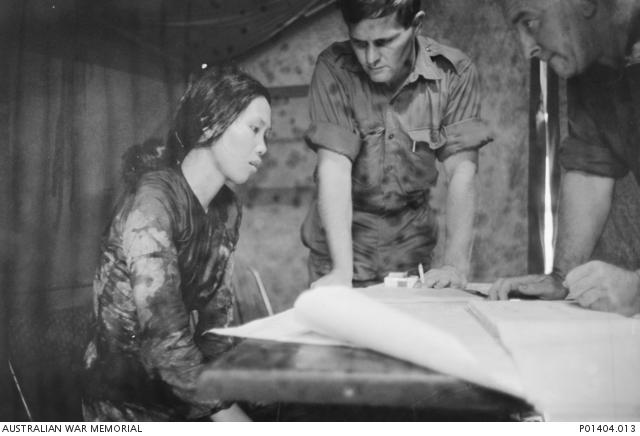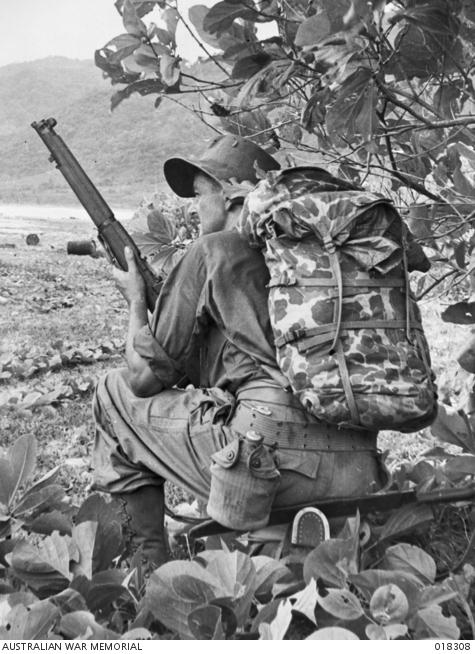Controversial evidence

Gabriel Carpay, Interrogation of a Viet Cong prisoner, 1966 (P01404.013)
P01404.013
The meaning of photographs can be very ambiguous. Once taken, a photograph can be given many interpretations and can be used for many - and for even competing - purposes. One of the most compelling examples of this occurred during the Vietnam War.
Photographs taken by the Australian freelance photographer Gabriel Carpay in October 1966 became central to what became known as the “water torture case”. Carpay was among a group of independent journalists and photographers invited to attend the interrogation by Australian intelligence staff of To Thi Nau. She had been a member of a Viet Cong group spying on the Australian base at Nui Dat. She was captured and taken to Nui Dat, where she was questioned over a 30-minute period by intelligence staff wanting information about Viet Cong activity in the area. The interrogators were aggressive, and claims of brutality became the subject of an internal investigation.
During the controversy that followed, the new Minister for the Army, Phillip Lynch, declared that there was “not one scintilla of evidence” to support claims that To had been mistreated. Seventeen months after the interrogation, one of the journalists at the interrogation, John Sorell, published his account of what had happened. Sorell described how a warrant officer had forced water down To’s throat for upwards of half an hour.
Carpay’s photographs, which he took in the first minutes of the interrogation, and then in the final minutes, became a central component of the controversy. In one of its reports on the story, the Melbourne Herald contended that Carpay’s photographs showed that Australian soldiers were “given to torturing prisoners”. Oz magazine also used Carpay’s photographs to support its own, sustained criticism of the war. Without describing what he saw during the interrogation, Carpay insisted his photographs did not support the case that To had been tortured. Even so, the photographs became inseparable from the “water torture” story, which took on a life of its own and became a central argument against the war.
Fitzpatrick controversy

James Fitzpatrick, One of the first troops into But was Private Jack Redd of Sydney, NSW, seen searching the area of But Jetty, with a wary eye, before advancing into the enemy-held territory, 31 March 1945
018308
One notorious example of dubious photographs from the Second World War is a series of images taken by the Department of Information photographer James Fitzpatrick of the Australian’s landing at But, in north-western New Guinea on 31 March 1945. The army’s field censor refused to release some of these photographs because they appeared to have been staged. Consequently, those that were approved for circulation were considered something of a “scoop”. One photograph of Australian soldier Jack Redd, one of the first soldiers to land, was published in Australian newspapers during April and May. The photograph showed Redd crouching beneath a shrub, carrying a camouflaged backpack and a rifle. Its caption read, “One of the first Australians into But was Pte Jack Redd of Sydney, here seen searching the area of But Jetty with a wary eye before advancing into enemy-held territory.”
A few days later, however, General Thomas Blamey announced that the figure was not Private Jack Redd; indeed, no such soldier existed. “Jack Redd” was in fact war correspondent John Scarlett. Fitzpatrick had taken the photograph while he and Scarlett were following a patrol: “Swinging my camera I noticed Scarlett intently concentrating on the movement of the patrol. Although it was a backview of Scarlett, it looked tense and a good news picture.”
But the photograph required a context. Using a synonym of Scarlett’s name and a few loaded terms - “first,” “searching,” “wary,” “advancing” - Fitzpatrick created this dramatic context. Fitzpatrick’s photograph became highly controversial. On the one hand, it appeared to support one side of a long-running debate over equipment supply for Australian troops, and the commitment of the Curtin Labor government to Australian troops fighting in the south-west Pacific. When the Melbourne Herald published the photograph, for example, it asked why Redd’s clothing and accoutrements were American. On the other hand, it undermined the public expectation that an official photograph would faithfully represent its subject.